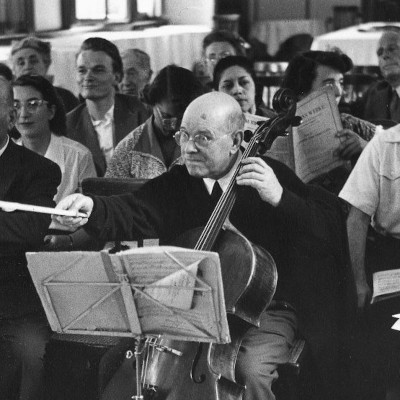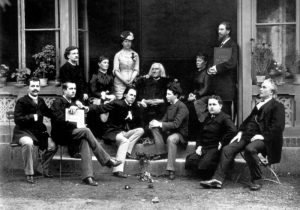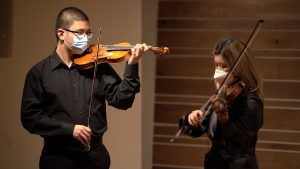
Master Class: An Observer’s Guide
Guarneri Hall’s “pin-drop” acoustics make it an ideal environment for master classes. In fact, master classes have become an integral part of each season, always open to the public and live streamed on our website.
However, the notion of a master class might seem daunting to a concert-goer with a limited musical background. After all, only a software developer might gravitate toward a live demonstration of “modern Java programming” or a “K8 installation tutorial.” Only a biologist could gain insight from a presentation about “the role of cytoskeleton regulators in embryonic facial morphogenesis.”
But music appreciation doesn’t require the same level of foundational knowledge as computer programming or biology. Music is an acoustic art, and live performance is intended for the general public. Even for the uninitiated, master classes can provide a unique window into a performance’s nuances and dramatically enhance observers’ listening experiences long after the masterclass ends.

A Window into the Challenges of Live Performance
A typical master class is made of 3-5 young performers playing one at a time, usually for 20-40 minutes each, for an audience and a master teacher. The master teacher listens and offers commentary and suggestions to each student. While each teacher may handle things differently, it is fairly standard for each segment of the class to begin with a performance of a single movement or short work, followed by comments from the teacher to which the young performer then responds. In a master class, the sanitized seamlessness of the concert experience is stripped bare. Some performers might be nervous, some may struggle to respond to suggestions, and others may adapt easily. Mistakes might be heard. The entire presentation is much less predictable than a formal concert.
The pedagogical value of master classes is clear: aspiring musicians must learn to perform under pressure in front of an audience. Master classes provide critical, high-pressure performance opportunities for up-and-coming performers and give them opportunities to benchmark their progress against their peers. Master classes also provide master teachers opportunities to observe developing musicians in performance settings.
For observers, a master class can offer a window into the challenges of live performance and interesting insights into the personality and interpretive priorities unique to the master teacher. The nuances of performance revealed in class can also lead observers to greater enjoyment of the same masterpieces when presented in concert.

Origins
The first regular master classes might have been those at the Paris Conservatory, founded in 1795. Master classes continue to form a part of the curriculum today. Franz Liszt (1811-1886), the most sensational pianist of the 19th century, began presenting his students in public master classes in the 1850s. Classes given by the famous Polish pianist and pedagogue Theodor Leschetizky (1830-1915) became legendary. With his salon arranged like a concert hall and over 200 students and observers crammed in for each class, Leschetizky’s master classes served as dry runs of public performances reserved solely for the best pupils. Although, master classes have varied in size and format over their 200 years of existence, they have continued to hold the same purposes as they did for Liszt and Leschetizky’s pupils.
What Can be Learned?

Watching a student and teacher connect can be inspiring. The teacher’s comments and suggestions can be illuminating, not just in the technical execution of a piece or a phrase but also in the deeper interpretive meaning of the piece itself. The observable adjustments by the young performer tell a story, bringing non-musician observers closer to the music and the performance process than might be otherwise possible. It is a thrill to hear the suggestions of an artist-teacher brought to life by a promising young musician. Each successful adjustment can find the observer reveling at the capabilities of the young performer, marveling at the teacher’s insight, and being inspired by new ways of hearing the music at hand.
What to do:
There are steps observers can take to optimize their experience when attending a master class:
- Even if you don’t play an instrument, try to find the musical program beforehand. Listen to performances of each work and study the score, if you can read music. Doing so will make corrections offered by the teacher easier to understand.
- Arrive early. What happens in the room just before the class begins can be very interesting!
- Sit close. You will want to be able to hear everything!
- Be prepared to ask questions if the teacher invites them. While breaking the ice can be challenging, most teachers are more than happy to respond to inquiries from an audience.
Do Not be Intimidated!
Masterclasses are low-pressure opportunities for the musically curious to expand their horizons. There are no prerequisites and one can stay passive as an observer. But nothing promotes active listening quite like observed interaction. So rather than feeling intimidated at the prospect of what one doesn’t know, we encourage you to look at masterclasses as an opportunity to get inside the music, the process, and the performers.

